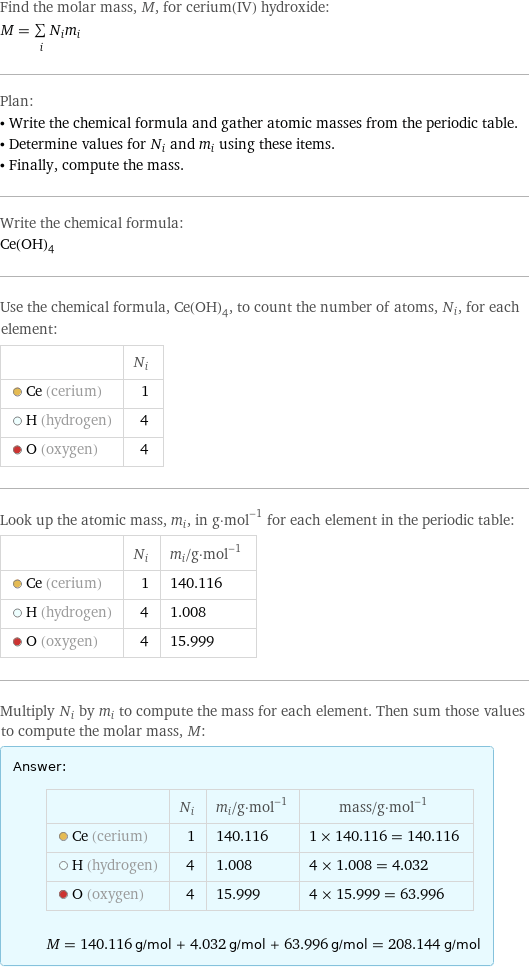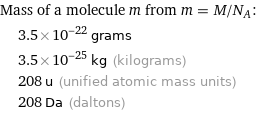Input interpretation

cerium(IV) hydroxide | molar mass
Result

Find the molar mass, M, for cerium(IV) hydroxide: M = sum _iN_im_i Plan: • Write the chemical formula and gather atomic masses from the periodic table. • Determine values for N_i and m_i using these items. • Finally, compute the mass. Write the chemical formula: Ce(OH)_4 Use the chemical formula, Ce(OH)_4, to count the number of atoms, N_i, for each element: | N_i Ce (cerium) | 1 H (hydrogen) | 4 O (oxygen) | 4 Look up the atomic mass, m_i, in g·mol^(-1) for each element in the periodic table: | N_i | m_i/g·mol^(-1) Ce (cerium) | 1 | 140.116 H (hydrogen) | 4 | 1.008 O (oxygen) | 4 | 15.999 Multiply N_i by m_i to compute the mass for each element. Then sum those values to compute the molar mass, M: Answer: | | | N_i | m_i/g·mol^(-1) | mass/g·mol^(-1) Ce (cerium) | 1 | 140.116 | 1 × 140.116 = 140.116 H (hydrogen) | 4 | 1.008 | 4 × 1.008 = 4.032 O (oxygen) | 4 | 15.999 | 4 × 15.999 = 63.996 M = 140.116 g/mol + 4.032 g/mol + 63.996 g/mol = 208.144 g/mol
Unit conversion

0.20814 kg/mol (kilograms per mole)
Comparisons

≈ 0.29 × molar mass of fullerene ( ≈ 721 g/mol )

≈ 1.1 × molar mass of caffeine ( ≈ 194 g/mol )

≈ 3.6 × molar mass of sodium chloride ( ≈ 58 g/mol )
Corresponding quantities

Mass of a molecule m from m = M/N_A: | 3.5×10^-22 grams | 3.5×10^-25 kg (kilograms) | 208 u (unified atomic mass units) | 208 Da (daltons)

Relative molecular mass M_r from M_r = M_u/M: | 208